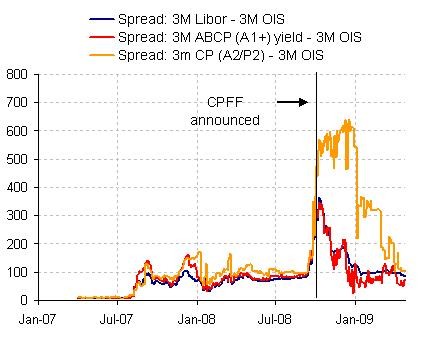How Unconventional Monetary Policy Works
Post on: 29 Май, 2015 No Comment

Central banks are tasked with implementing a country’s monetary policy. which controls the size and rate of growth of the money supply. This is important, as monetary policy can serve to promote economic growth during periods of recession and stabilize periods of high inflation. Conventional methods used to exercise monetary policy include increasing or decreasing target interest rates, bank reserve limits, and the money supply itself through open market operations. During periods of extreme economic crisis, such as that following the Great Recession of 2008, these traditional monetary policy tools hit a wall and may no longer be effective in achieving their goals. Unconventional monetary policy, such as quantitative easing. may then be employed to jump-start economic growth and spur demand. (For more, see: A Look At Fiscal And Monetary Policy .)
A Brief Overview of Conventional Monetary Policy
When a nation’s economy becomes ‘overheated’ – growing rapidly to the point that inflation increases to dangerous levels – the central bank will enact restrictive monetary policy to tighten the money supply. This effectively reduces the amount of money in circulation and also the rate at which new money enters the system.
Raising the target interest rate makes money more expensive and increases borrowing costs, reducing the demand for cash and cash instruments. The bank can also increase the level of reserves that commercial and retail banks must keep on hand, limiting their ability to generate new loans. The central bank can also sell government bonds from its balance sheet in the open market. exchanging those bonds by taking in money from circulation.
When a nation’s economy slips into recession, these policy tools can be operated in reverse, constituting a loose or expansionary monetary policy. Interest rates are lowered, reserve limits loosened, and instead of selling bonds in the open market, they are purchased in exchange for newly created money.
Unconventional Monetary Policy Tools
The problem with conventional monetary tools in periods of deep recession or economic crisis is that they become limited in their usefulness. Nominal interest rates are effectively bound by zero, and bank reserve requirements cannot be made so low that those banks risk default. Once interest rates are lowered close to zero, the economy also risks falling into a liquidity trap. where people are no longer incentivized to invest, and instead hoard money, preventing a recovery from taking place.
Loading the player.
That leaves the central bank to expand the money supply through open market operations (OMO). In periods of crisis, however, government securities tend to become bid up due to their perceived safety, which limits their effectiveness as a policy tool. Instead of buying government securities, the central bank can purchase other securities in the open market outside of government bonds. This is often referred to as quantitative easing (QE).

Normally, non-government securities markets operate free from central bank intervention, and they decide to purchase these securities only in times of need. The types of securities purchased during a round of QE are typically bonds or debt instruments owned by financial institutions including mortgage backed securities (MBS). QE can also take the form of buying long-term bonds while selling long-term debt in order to influence the yield curve in an attempt to prop up housing markets which are financed by long-term mortgage debt. When the central bank begins buying private assets like corporate bonds, it is sometimes referred to as credit easing.
If the usual QE attempts fail, a central bank can take the more unconventional route of trying to prop up equity markets by actively purchasing shares of stocks on the open market. During the years after the financial crisis, central banks around the world did in fact engage in equity markets to some degree. The central bank can also signal to the public its intentions to keep interest rates low for prolonged periods of time or that it will engage in new rounds of QE in an attempt to boost investor confidence, which can trickle down to the broader economy to promote demand.
If all else fails, the bank can attempt to institute a negative interest rate policy (NIRP), whereby instead of paying interest on deposits, depositors will have to pay for the privilege of keeping money at a bank. The idea is that people will prefer to spend or invest that money instead of being penalized for holding on to it. This sort of policy can be very dangerous, however, as it can punish savers. (For more, see: Understanding Interest Rates: Nominal, Real And Effective .)
The Bottom Line
Central banks enact monetary policy to change the size of the money supply and its rate of growth. This is normally done through interest rate targeting, setting bank reserve requirements, and engaging in open market operations with government securities. In periods of severe economic downturn, these tools become limited as interest rates approach zero and commercial banks become worried about liquidity.
Engaging in open market operations with instruments other than government bonds, such as mortgage backed securities, can help in these situations. This is referred to as quantitative easing. When QE is not enough, the bank can enter other markets, including equity markets, signal to the market that they will engage in an expansionary policy for a long period of time, or even resort to implementing a negative nominal interest rate.














